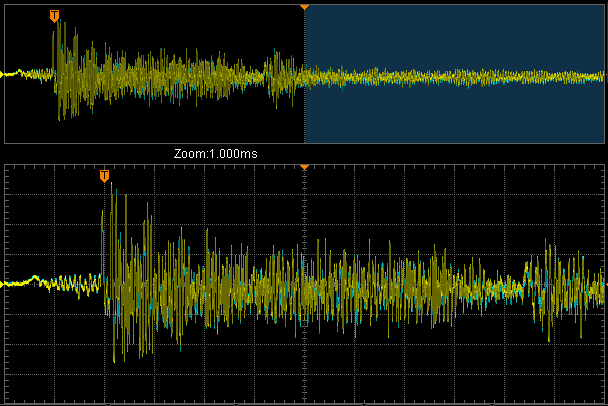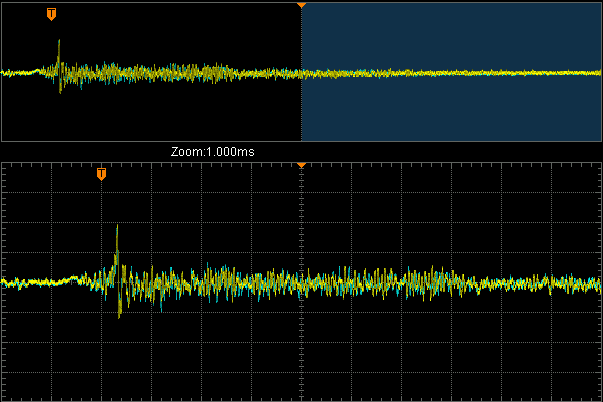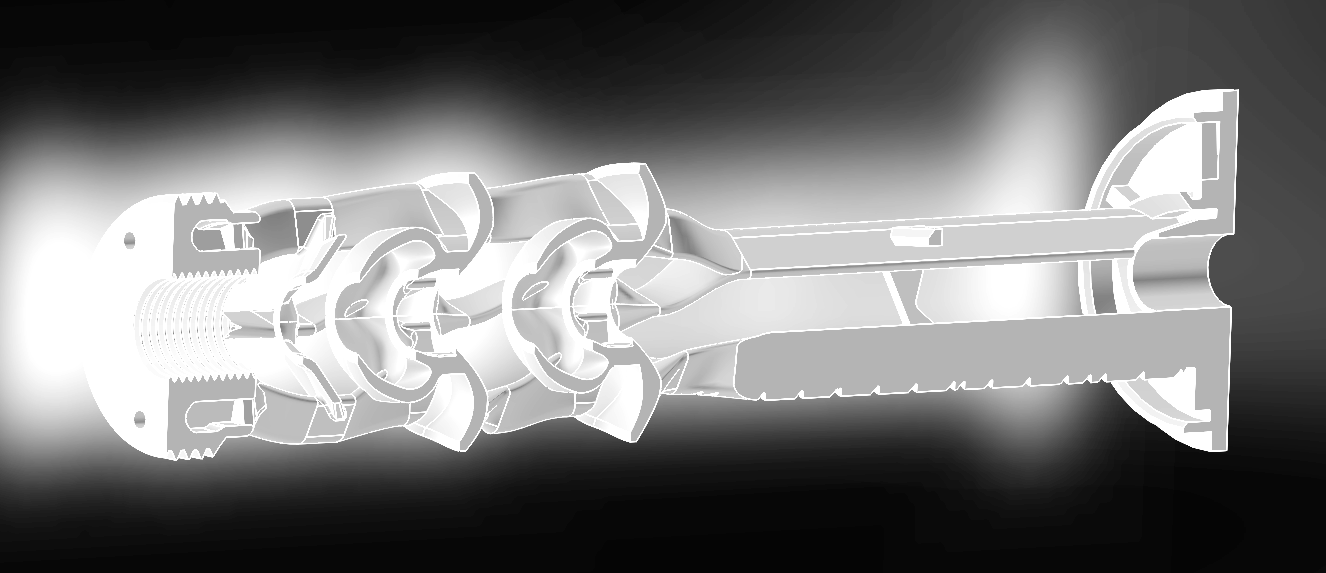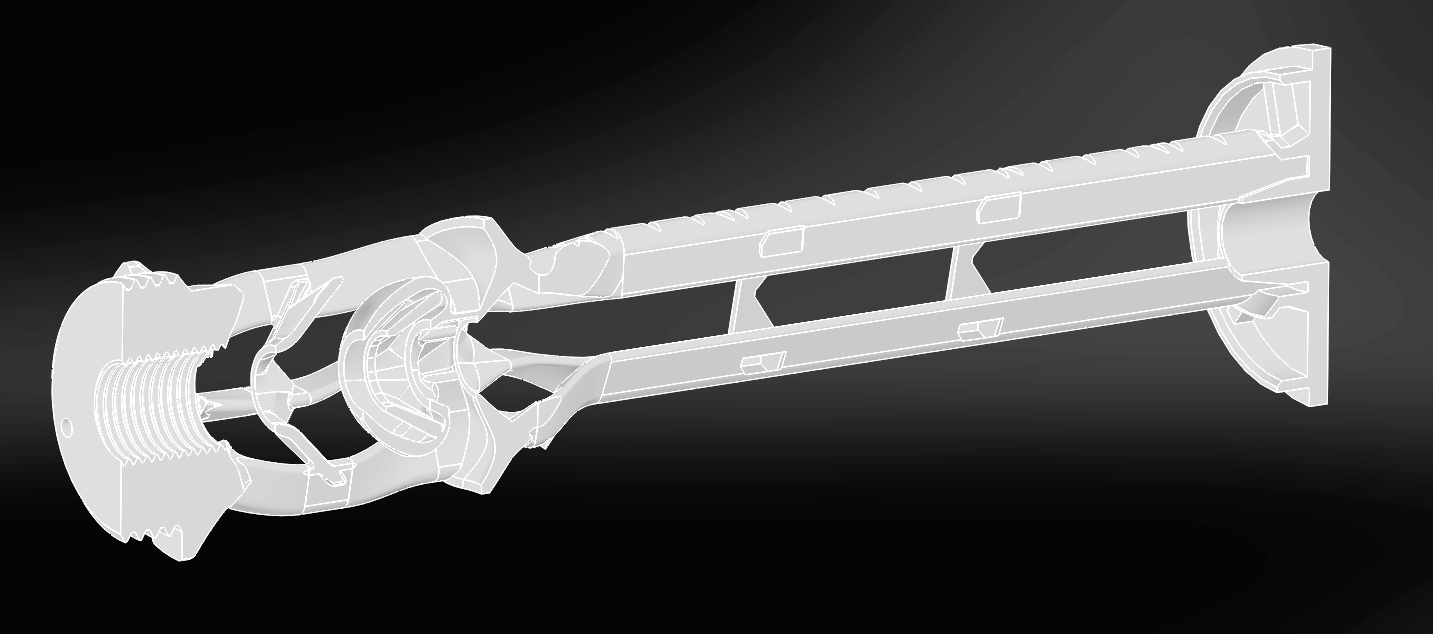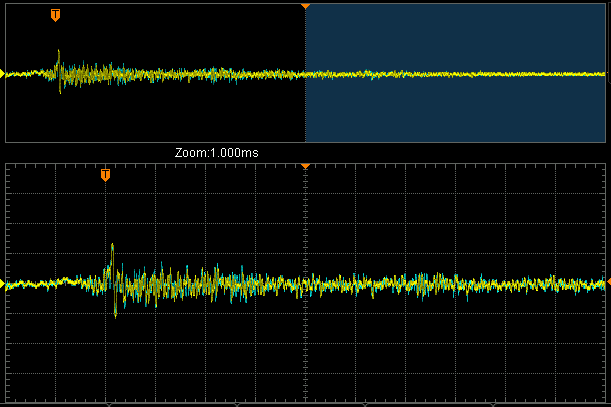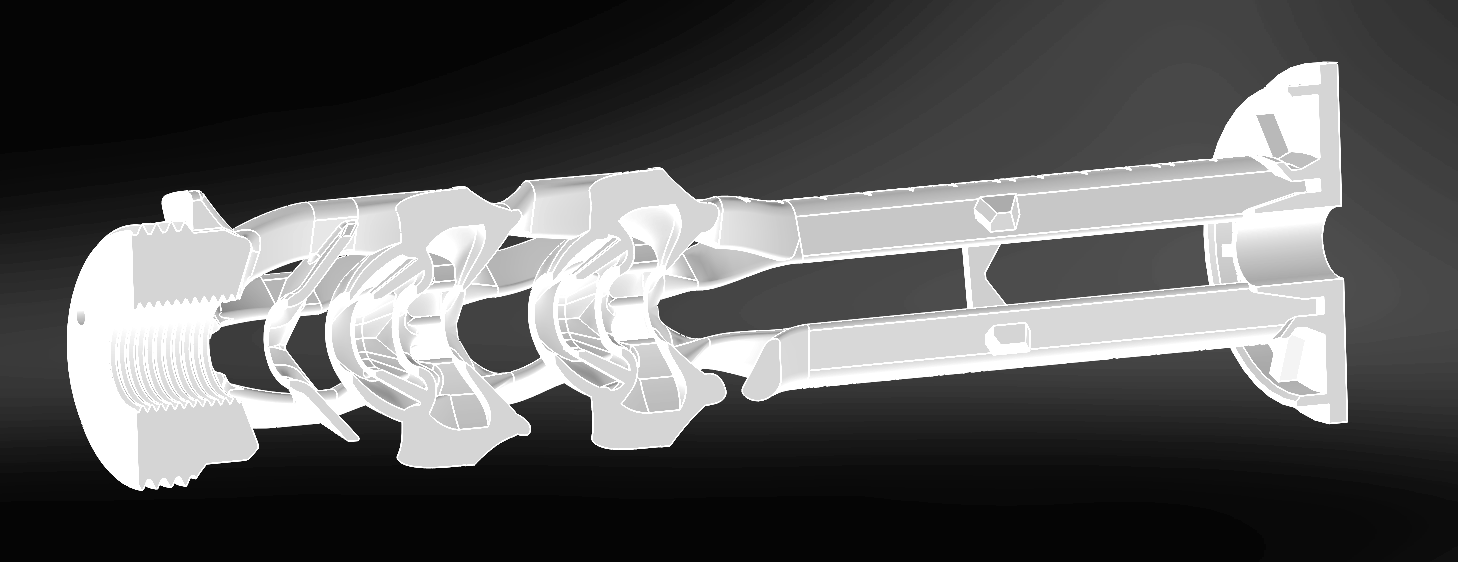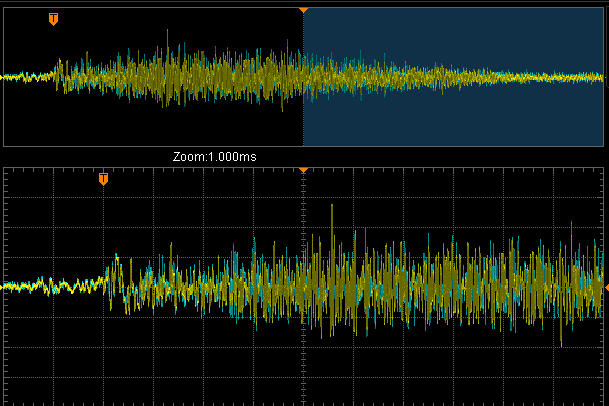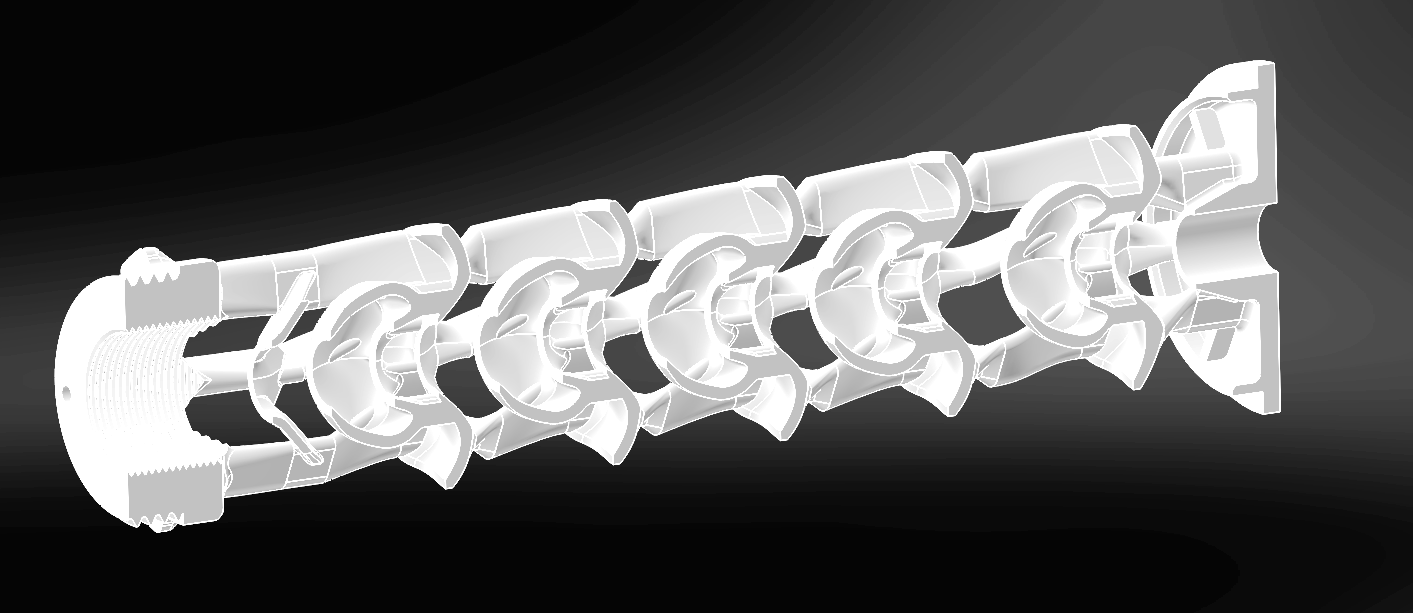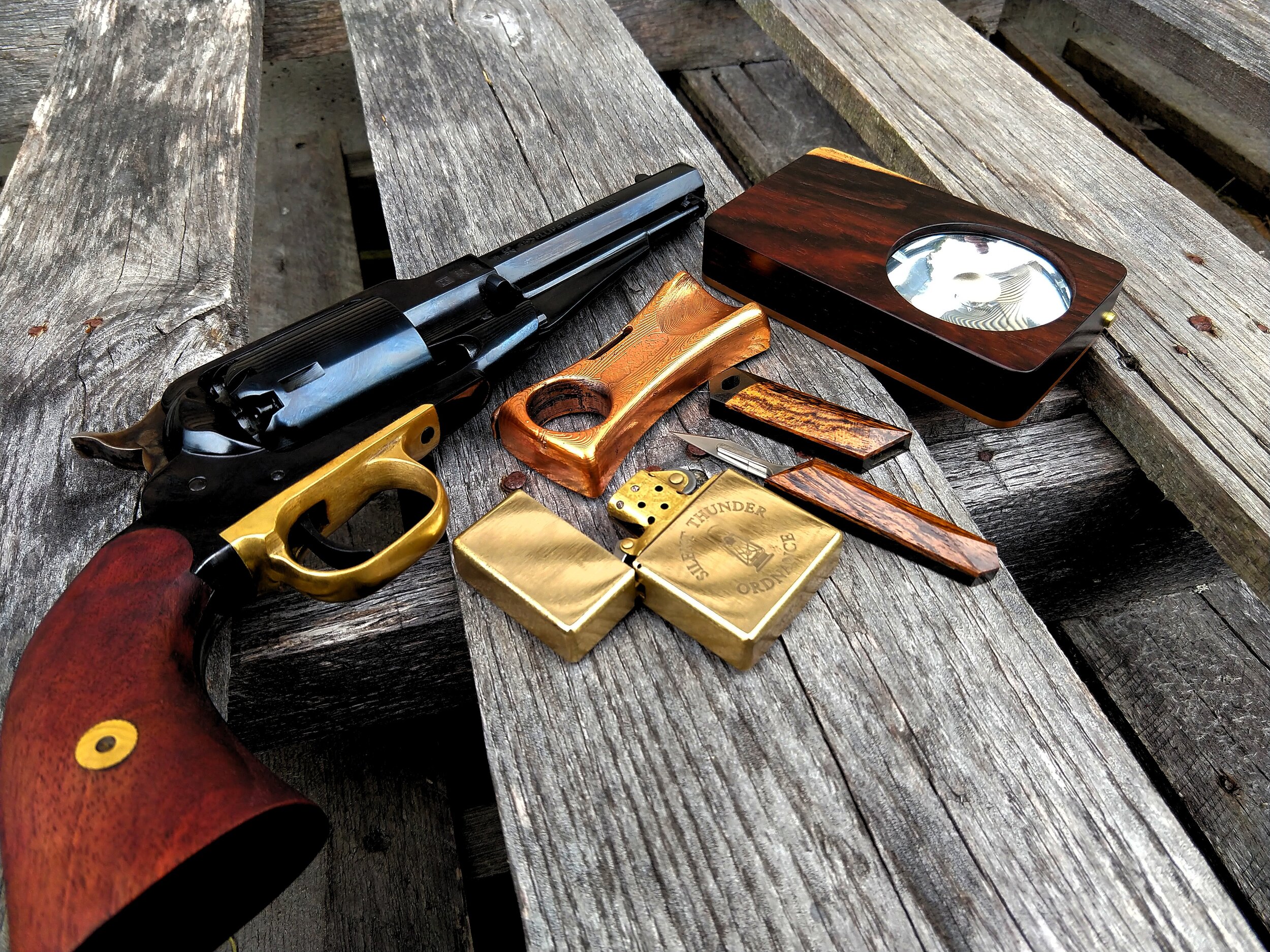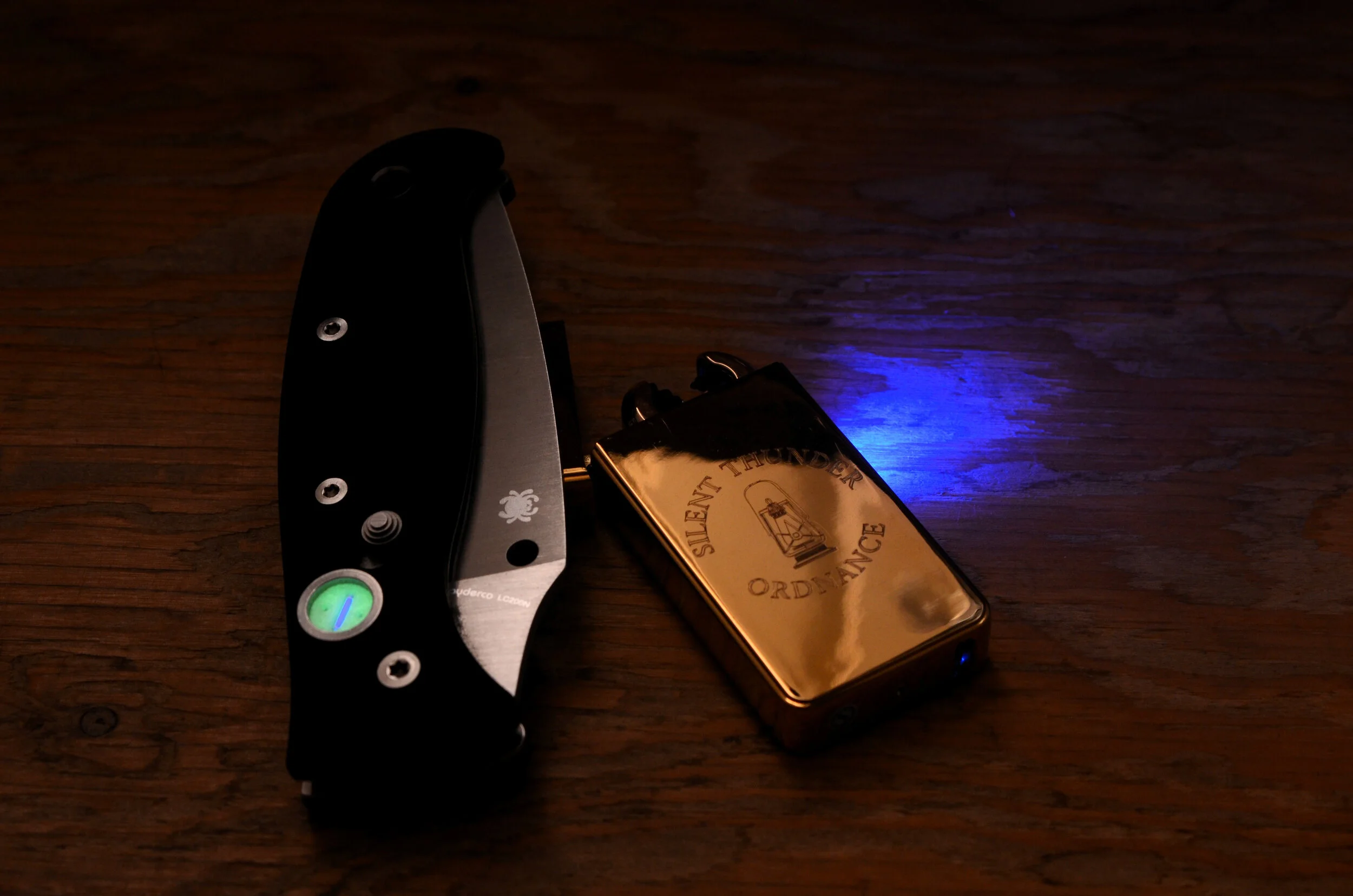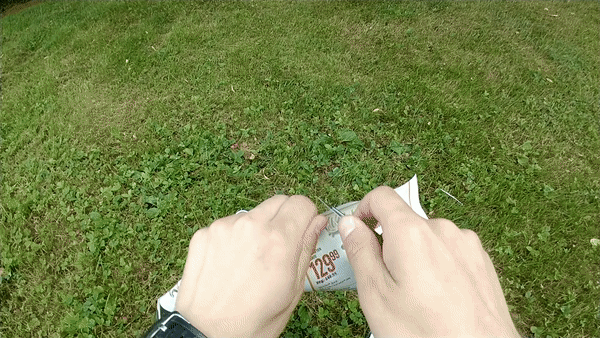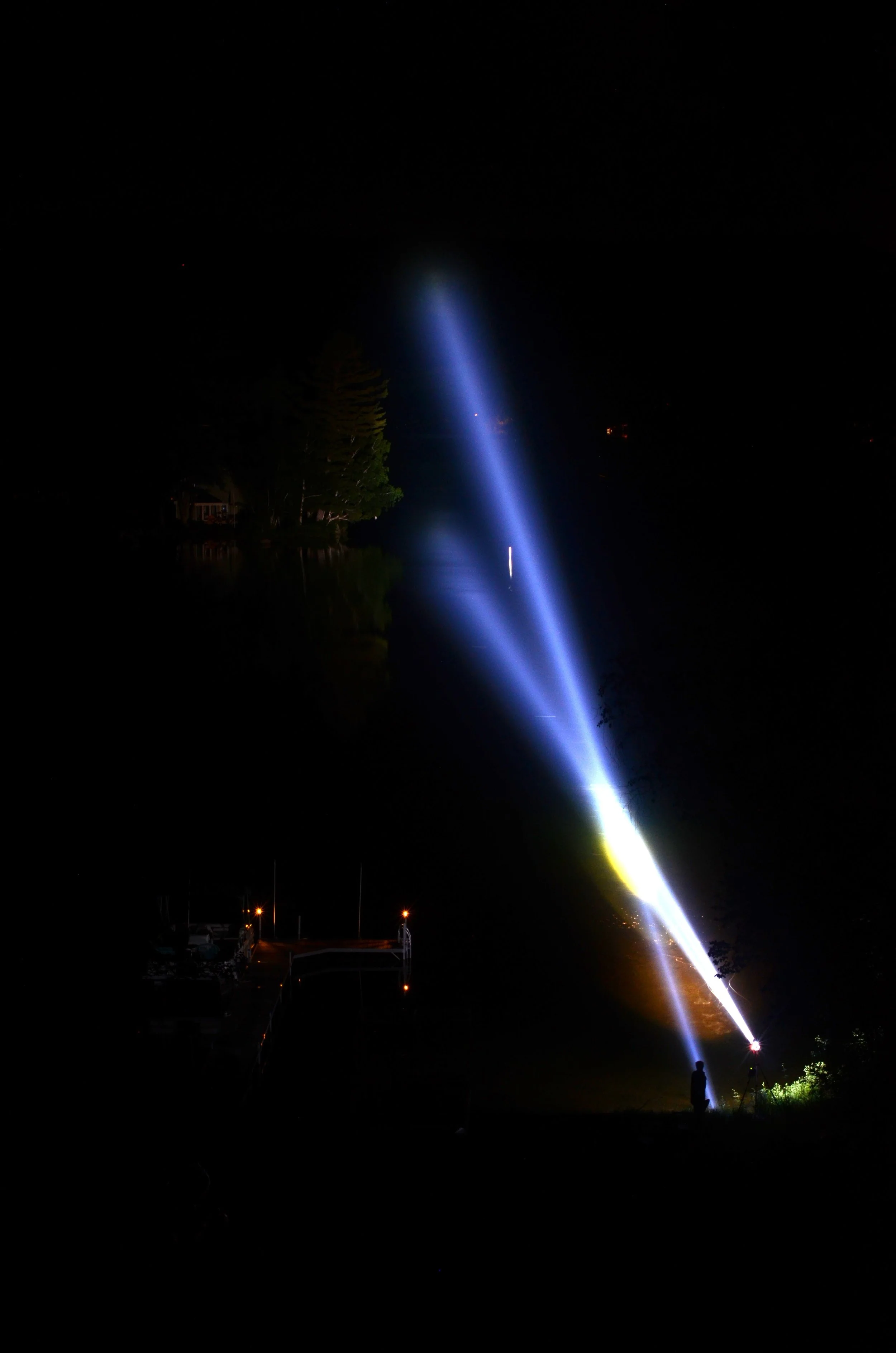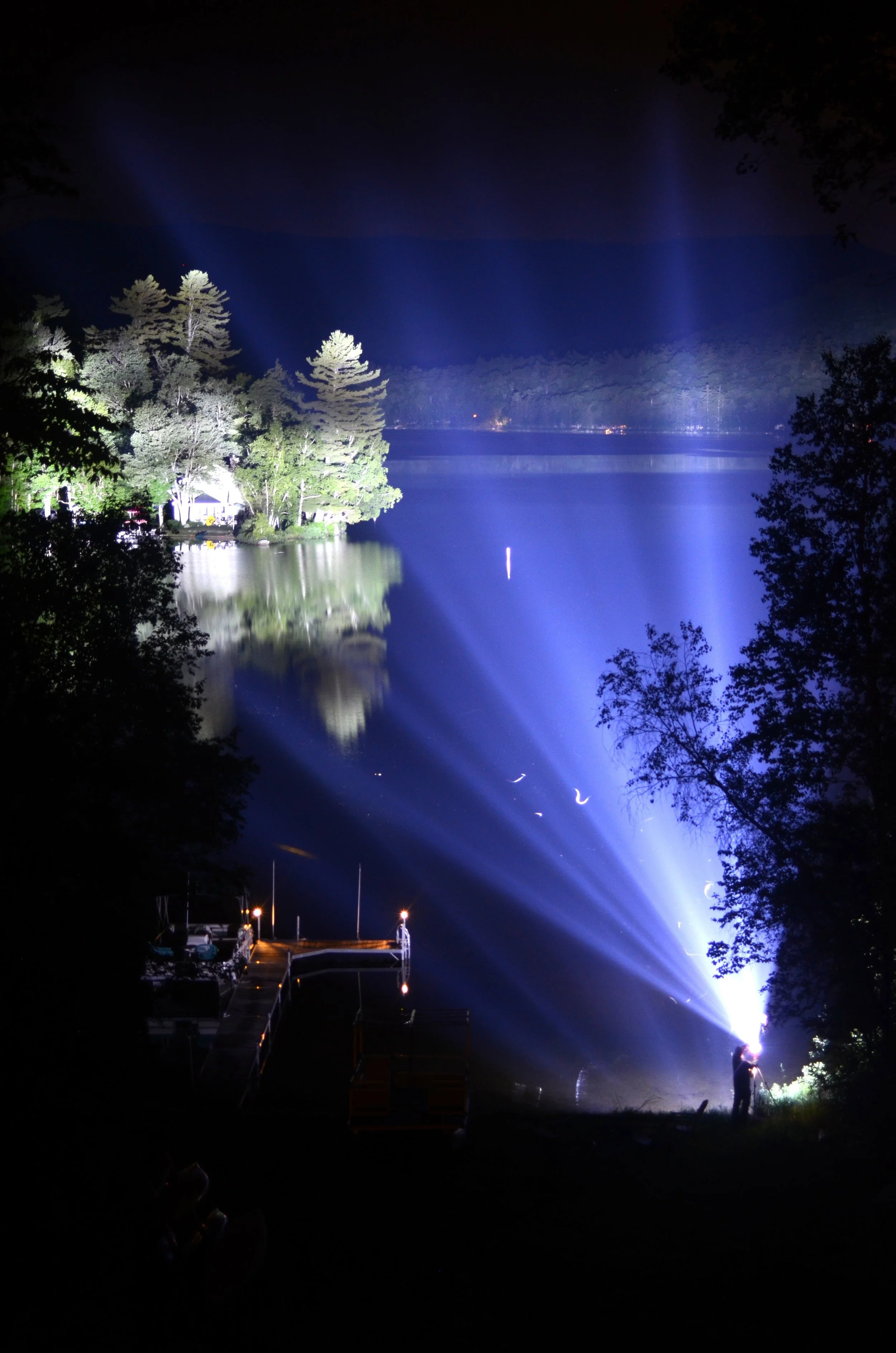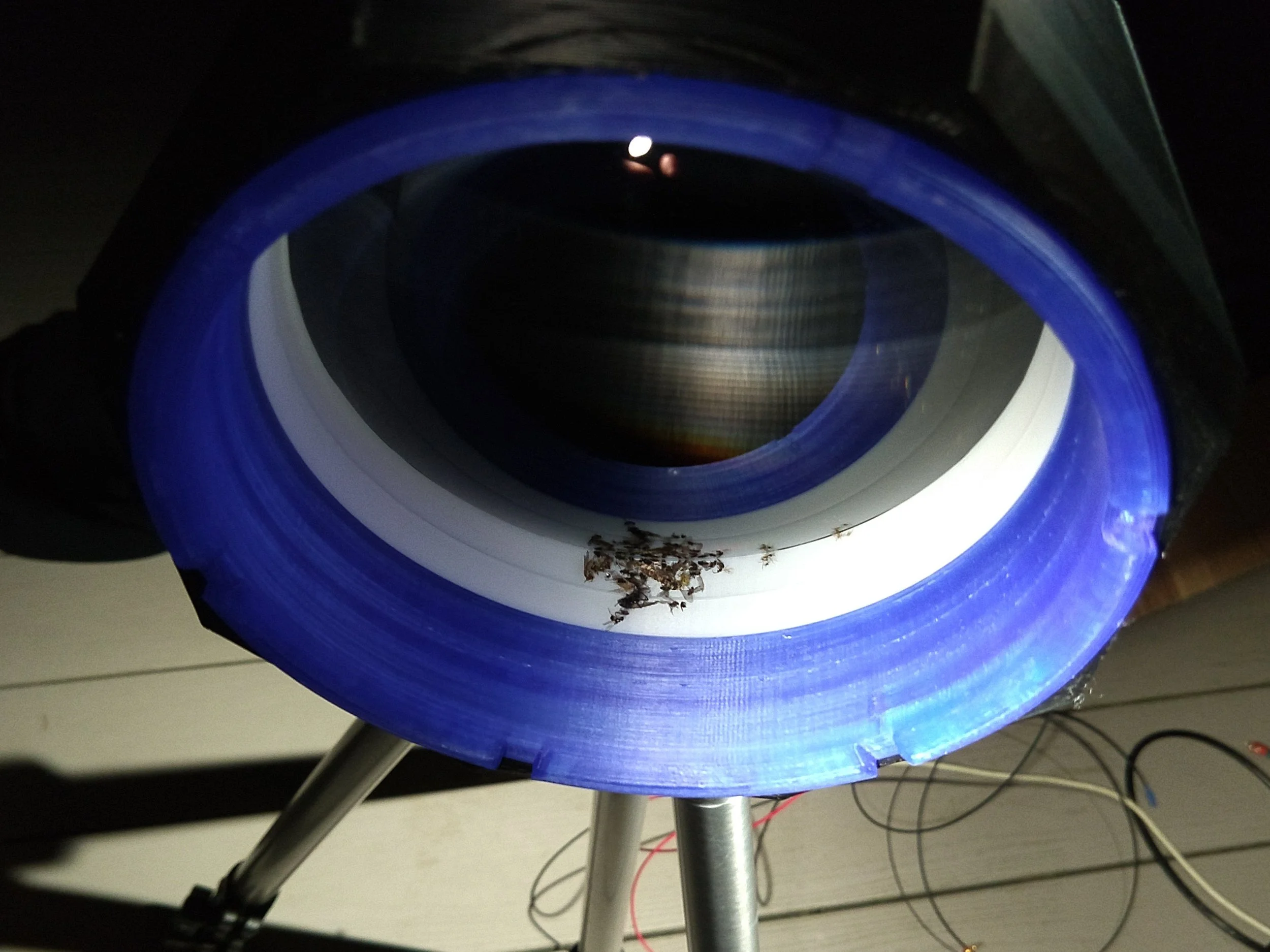Catch the previous episode HERE.
Yes, I’m still here, and I’m still playing with moderators in my copious free time. I spent a lot of time playing with a new piece of technology, figuring it out, and some cool, interesting, and pretty unique things are on their way along with more testing. That is all for later though. Right now I want to talk about something very interesting I discovered regarding tube ping, namely that IT GETS LOUDER. Didn’t expect that? Don’t understand what I mean? Let me unpack.
The above trace is a .308 American Air Arms Slayer. It is a powerful slug-throwing gun running about 200 foot pounds at the muzzle. It is unregulated, runs a tube, guzzles air, and runs some balanced valving witchcraft. All this means that the valve opening and closing events, as well as the total amount of air removed, are relatively violent events in the air tube. Unsurprisingly, this leaves the rifle with a very pronounced “ping” when it fires. Several months ago, I was approached by a gentleman who wanted me to develop a moderator for his Slayer. It seemed like a fun challenge at the time (spoiler alert, its been a pain in the tuchus), so I took him up on the offer. It has been a bit of a roller coaster of hope and failures, but I just finished testing a design which is quieter than the tube ping, and THAT is interesting.
To be clear, I’m only pretty sure of all this, you can never been 100%, but looking at the timeline, other tests, so on and so forth it seems to be the only thing that makes sense. So, in the above trace highlighted in yellow, you can clearly see the “uncorking event,” that is to say the moment when the pellet exits the muzzle of the moderator. It is a bit messy here, because it is all mushed into the tube ping….. which clearly increases in amplitude over time. This might, on first blush, sound a little screwy. How, after all, could the tube ping get louder AFTER the most violent event (valve opening/closing)? If you think about it for a minute though, this actually starts to make sense. When the valve first opens, the air/sound in the tube won't be moving in a uniform wave. The air nearest the valve will expand substantially more than the air nearest the gauge. Similarly when the valve first closes, the air won’t all simultaneously stack up at that end of the tube in a pressure spike because it isn’t all going at the same speed. It takes a couple cycles back and forth for that air movement to coalesce into a uniform sound wave front and thereby reach peak amplitude/intensity. Then, obviously, hysteresis naturally damps it back down to zero over time, in this case a much longer time than was sampled. Look at that happen too. Initially the sound is messy, very messy (look at the area between the yellow highlighting and the teal highlighting), and it actually takes a little time for the wave to coalesce around its primary frequencies. As it does so, it increases in amplitude! I was COMPLETELY not expecting this, but now that I've found it, I thought I ought share it.
This naturally leads to some interesting ideas on the design of depingers; they don’t have to break up the wave front to function, they simply need to stop it from forming in the first place. This suggests entirely different avenues of design, some in the same vein as existing designs granted, but others completely novel.
Cool stuff eh?















